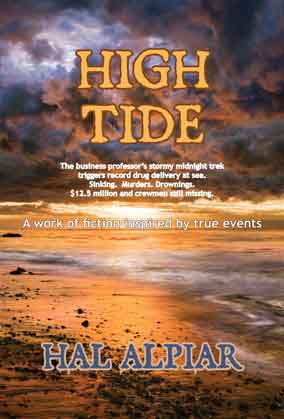Sep 04 2010
The Customer Cusp
Is There a Crack in Your
Business Liberty Bell?
Dear Ship Captain:
Maybe your people were never at liberty to learn how to hold on to customers when economic seas got rough? No, bungee cords are not the solution! Giving your people the freedom and incentive to learn is the solution. Why now when every penny counts? Because every customer counts! And the bigger the waves, the more widespread the sense of panic — for your customers and customer businesses as well as for your own.
Your customers may not be in the same boat
. . . but they’re in the same boat!
This of course doesn’t apply if you’re working in a cushy, tax-dollar-supported government position — one of those newly-created jobs we hear about that are simply adding to our catestrophic national debt. (Sorry, had to get that dig in because, regardless of who did what to whom or who blames whom, the fact remains that those artificial “new jobs” are a large part of why things are the way they are.)
Bottom line is that you have to know that being in the same boat as your customers (and your neighboring and affiliated businesses) translates to the need for teamwork in order to survive in storms, and help ensure that every one’s rowing in the same direction. (You’ve seen the Olympic motivational poster: TEAM…Together Everyone Achieves More. It’s true in business too!)
What can you do about weathering this storm
beginning first thing Tuesday morning?
How can you take a firm foothold of quiet leadership? How can you promote and foster teamwork between your own unsteady business and your nervous or floundering customers who may be on the cusp of giving up their loyalty to you, in favor of less expensive products and services?
The first answer: SET AN EXAMPLE. Show your employees and your customers (and other businesses) how to lead your common interests out of the darkness. Sure you have a vote in November, but that’s 60 days away and, even with sweeping changes, it maybe another year before any entrepreneurial-job-creation relief surfaces. (This may help you get started: http://bit.ly/bo3ZJy)
The second answer: FIRST AID. Give your staff a “refresher” crash course on how to trip over yourself trying to delight every customer and every prospect. Keep reminding them to treat every business visit and contact the way they would want their closest family and friends to be treated. Make sure that “The Customer Is Always Right!” is not just a token expression.
Check out an A-1 classic customer service training video entitled “Give ’em the Pickle!” with Bob Farrell http://bit.ly/gD1b6
Develop an incentive planor program that rewards exceptional customer care efforts. Keep in mind that cash is not always the best or most sought-after reward. Read up on Maslow’s Hierarchy of Needs motivational theory; it works. Start with Net MBA: http://bit.ly/mKk7D Scroll to “Implications for Management.”
The third answer: LONG-TERM CARE. There are many competent training organizations that specialize in customer service and customer relationship development and management that you can contract with for ongoing or quarterly session programs. Annual and semi-annual efforts are a waste of time and money. Here are two of the best resources to contact:
Consider a customer-centric “Train the trainer” style leadership program from an organization like TBD Consulting (contact Jonena Relth) www.TBDConsulting.com for options that can bring your designated human resource person up to speed to be able to run ongoing in-house programs.
Another strong alternative –and one that can work independently or in concert with a program like Jonena’s– is Pro-Star (contact Meredith Bell) www.ProStarCoach.com –an exciting new way to provide every employee with their own individually customized computer skill development training and follow-up program, one that also allows for each participant to communicate regularly with her or his hand-picked skill development support team.
www.TWWsells.com or 302.933.0116 or Hal@BusinessWorks.US


